The Fighter Read online
Contents
Cover
About the Book
About the Author
Also by Tim Parks
Dedication
Title Page
The Fighter: D. H. Lawrence
Gardens and Graveyards: Giorgio Bassani
After the Struggle: Feodor Mikhailovich Dostoevsky
The Illusionist: Benito Mussolini
Fear is the Key: Thomas Hardy
The Disenchantment of Translation
Still Stirring: Samuel Beckett
Genius of Bad News: Thomas Bernhard
Let Sleeping Beauties Lie: Elfriede Jelinek
A Polished Pessimism: Emil Cioran
True Scandal: Niccolò Machiavelli
A Model Anomaly
Mad at the Medici: Lorenzo de’ Medici
Love Letter: Fleur Jaeggy
Tales Told by a Computer: Hypertext
Real Dreams: Émile Zola
A Matter of Love and Hate: World Cup Football
Hero Betrayed: Giuseppe Garibaldi
Siege of the Serenissima: 1848
The Superman’s Virgins: Gabriele D’Annunzio
A Pagan in Italy: Lawrence and Italy
Places and dates of first publication
References
Copyright
About the Book
One of Britain’s outstanding novelists, Tim Parks, has published two acclaimed essay collections, Adultery and Other Diversions and Hell and Back. This new volume finds him as provocative and entertaining as ever.
The title piece addresses D.H. Lawrence’s fundamental belligerence and how all the significant relationships in his life, including those with his readers and critics, were characterized by intense intimacy and ferocious conflict. Elsewhere there are literary essays on tension and conflict in the work of Beckett and Hardy, Bernhard and Dostoevsky, amongst others.
Parks is also known for his acerbic chronicles of Italian life and here are essays on Mussolini, Macchiavelli and the Medici. Besides discussing questions of history, politics and literature, The Fighter also takes on the serious issue of World Cup football.
Above all, these are essays whose ideas and themes call to each other in the most unexpected and ironic ways. From the wide variety of subjects emerges a consistent and convincing picture of a world that forever resists the writer’s embattled attempts to wrap it up in language.
Muscular and energetic, The Fighter is a wonderful display of engagement and judgement.
About the Author
Tim Parks studied at Cambridge and Harvard. He lives near Verona with his wife and three children. His novel Europa was shortlisted for the Booker Prize. Destiny and Judge Savage were longlisted in 2000 and 2003.
Also by Tim Parks
Fiction
Tongues of Flame
Loving Roger
Home Thoughts
Family Planning
Goodness
Cara Massimina
Mimi’s Ghost
Shear
Europa
Destiny
Judge Savage
Rapids
Cleaver
Talking About It
Dreams of Rivers and Seas
Non-fiction
Italian Neighbours
An Italian Education
Adultery & Other Diversions
Translating Style
Hell and Back
A Season with Verona
Medici Money
To Bob Silvers and all his team at the NYR
TIM PARKS
The Fighter
Essays
The Fighter
* * *
[D. H. Lawrence]
‘NOW A BOOK lives’, wrote D. H. Lawrence, ‘as long as it is unfathomed. Once it is fathomed … once it is known and its meaning is fixed or established, it is dead.’1
If this is the case, Lawrence need not have feared for his own works. Seventy-seven years after his death they are all in print and the critics continue to debate, often to fight, over what they might mean. The proliferation of biographies is likewise remarkable, this despite the fact that Lawrence had as little desire to have his life ‘fathomed’ as his books: ‘I hate “understanding” people,’ he wrote in 1921, ‘and I hate more still to be understood. Damn understanding more than anything.’2
But if we are not to understand Lawrence, what is our relationship with him to be? Perhaps we can find a clue in the man’s belligerence. Whether dealing with his dog, his doctors, his wife or his closest friends, Lawrence’s relationships were characterised by an alternation between intense intimacy and ferocious conflict. In general, the more important a relationship was to him, the more likely it was to be punctuated by violent, even traumatic battles. The present essay will be nothing more than an attempt to understand if not Lawrence, then at least his literary longevity as a function of his passion for conflict. ‘I’ve just done the last proofs of Lady C [Lady Chatterley’s Lover]’ he wrote in 1928. ‘I hope it’ll make ’em howl – and let ’em do their paltry damnedest, after.’3
As might be expected, the fighting started at home. ‘When I was a small boy, I remember my father shouting at my mother: “I’ll make you tremble at the sound of my footstep!”’ Fourth of five children born to a Nottinghamshire coal-miner in 1885, the young David Herbert was terrified, but also ‘felt it was splendid and right’.4 His mother was not impressed. ‘Which boots will you wear?’5 she asked her husband wryly. The man was deflated. The boy learns that threats without action are empty. Sick in bed in his early thirties, Lawrence wrote to a friend of his relationship with his wife: ‘I suppose I’ll get strong enough again one day to slap Frieda in the eye, in the proper marital fashion. At present I am reduced to vituperation.’6
Any battle can be seen from at least two sides. In the fictionalised version of his parents’ relationship in Sons and Lovers (1913), Lawrence wrote of a sensitive, middle-class mother obliged to wrest her children’s upbringing from a brutish working-class father. The young writer himself had not been wanted by his parents, was merely the result of Father’s drunken, animal lust. Later in life, he could invert the situation: in some of Lawrence’s writings, the mother is a manipulative snob who imposes her self-righteous, middle-class values on a simple man with honest male instincts, so monopolising the children’s affection that their father becomes an exile in his own home.
For biographers recounting such bitter clashes, it’s hard not to take sides. In D. H. Lawrence: A Biography, Jeffrey Meyers is pleased to quote research that brings new ammunition to the father’s defence: Lawrence’s mother was not it seems, as we all grew up believing, from a higher class than her husband. The myth of her being a schoolteacher was all airs. Slum-bred, Lydia Beardsall was the merest factory worker when she met the handsome miner, Arthur Lawrence.
Meyers, who loves to close his otherwise excellent chapters, always well documented and convincingly told, with dogmatic little summaries, as if one more period of his subject’s life had now been safely stowed away, seems to miss the importance of this discovery. There was no inevitable clash between classes in the Lawrence household. Rather, a spurious class struggle was invented to mask an antagonism of pure wilfulness. ‘Their marriage has been one carnal, bloody fight’7 Lawrence wrote in 1910. Much of his writing would dramatise conflicts between partners – Gudrun’s against Gerald’s in Women in Love, Lou’s against Rico’s in St Mawr – but in such a way as to strip them of social alibis and circumstantial explanations. A typical scene in Women in Love describes Gerald, the industrialist, face down on his bed refusing to speak and Gudrun the bohemian artist determined not to let him escape confrontation in this way: ‘Her mind wondered over his rigid, unloving body. She was bewildered, and insistent, only
her will was set for him to speak to her.’8 With this prevalence of the individual will over social setting, the characters in Lawrence’s novels can seem shrill and insubstantial, or, alternatively, they gather the archetypal force of figures in myth. Either way, they are never Dickensian.
Two questions force themselves on biographers: how was it that the son of a coal-miner became one of England’s foremost intellectual and cosmopolitan writers? And what prompted a man brought up in the rigid moral framework of English Methodism, who ‘had the Bible poured every day into my helpless consciousness’,9 to become a prophet of sexual revolution?
Lawrence’s elder brother, William Earnest, the second son and his mother’s favourite, died when Lawrence was sixteen. David Herbert, or Bert as he was called, replaced him, her favourite at last, but only after a rival had been seen off. The boy’s chronic lung problems and general physical frailty made it easier for his mother to draw him away from his father’s world of sweat and coal dust. When Bert proved too weak even for the position of clerk in a surgical appliances manufacturer, he could be sent to train as a teacher.
Thus Lawrence’s education was part of Mother’s struggle against Father. Far from being a neutral quality, heightened consciousness was understood to be in direct opposition to masculine instinct. His sickliness assisted his mother’s project, and so was soon associated with intellectuality. The boy’s choice of friends fitted too. Mother accepted his relationship with Jessie Chambers and her family on a farm outside their mining village because the boy and girl seemed to spend most of their time reading, talking about books and in general procuring themselves an education.
But it wasn’t a sex education, and despite all Lawrence’s learning and frailty, masculine instinct could not be contained. The problem being that Jessie, like Lawrence’s mother, seemed so spiritual. Young Bert was confused. In the event he went off and had sex with another man’s wife, which allowed him, at least in the fictional version in Sons and Lovers, the added pleasure of a very masculine, potentially erotic fight with the wronged husband, a man who in some ways resembled Lawrence’s father. In 1910, long before time and distance might have allowed him to form a less idealised image of her, Lawrence’s mother died of cancer. He was heartbroken: ‘For me everything collapsed, save the mystery of death and the haunting of death in life.’10
Like many people desperately seeking to understand the world but getting nowhere, Lawrence turned out to be an excellent teacher. Between 1908 and 1911 he taught in a working-class school in Croydon, South London. He was full of theories and experimental methods. The pupils were instructed to express themselves freely, but to observe the strictest discipline. Lawrence opposed authority in general, his headmaster observed, except when he himself was imposing it: with the rod. ‘School is a conflict,’ Lawrence wrote to a friend, ‘mean and miserable – and I hate conflicts.’11 Not many years later he would explain why he had run off with another married woman: ‘She [Frieda] is the only possible woman for me, for I must have opposition, something to fight or I shall go under.’12
So Lawrence hated fights but needed them to keep him in form for other fights. With sickness for example. In 1911 he fell desperately ill with pneumonia. Just as a previous illness had got him out of clerking, so this one freed him from teaching. Physically, he was fit for nothing, it seemed, but writing. And that would be one long battle from beginning to end.
Alongside the huge body of work (a dozen long novels, many volumes of shorter fiction and poetry, three plays, four travel books, three full-length critical works and scores of essays), Lawrence also found time in his forty-four years to write literally thousands of letters. He could leave no acquaintance, however casual, alone. He was always ready to invite people to join him in some utopian, conflict-free community, or to curse them for refusing to join him, or for having rejected his work, written a bad review, or in some other way not lived up to his standards. Afterwards, he would write again to make up. One had imagined that the wonderful seven-volume Cambridge University Press collection of these letters was complete. Now an eighth volume of addenda has appeared, with hitherto unpublished material from more or less every period of the author’s life. Far from trivia, we find gems like this as early as page three: responding, in 1909, to a typescript of Lawrence’s first novel, The White Peacock, Ford Madox Ford, the first literary man to pay the author any attention, writes: ‘As you must probably be aware, the book, with its enormous prolixity of detail, sins against almost every canon of art as I conceive it.’13 But Madox Ford goes on to say that he believes Lawrence has great talents and a great future.
This ambivalent response to his work would soon become so familiar to Lawrence that he began to adopt it himself. Presenting his second novel, The Trespasser, to his publisher, he described it as ‘execrable bad art’. Nevertheless he was confident the editor would accept it. ‘Lawrence’, wrote his close friend (but also bitter enemy) the critic Middleton Murry, ‘gave up, deliberately, the pretence of being an artist … His aim was to discover authority, not to create art.’14
‘To discover authority’. What does Murry mean? No novelist has been both so highly praised and so frequently attacked as Lawrence; no literary reputation I can think of is so vast and so compromised. Two new critical introductions to his work, each excellent in its style and scope, The Cambridge Companion to D. H. Lawrence and The Complete Critical Guide to D. H. Lawrence, both feel the need to include chapters on see-sawing critical reactions to the writer over the years. While he was alive his work was met with incomprehension, contempt, censorship and adoration. His ability to convey a sense of place, to have drama explode from the apparently mundane was undisputed. His candour was admirable if disquieting. But his conclusions, and the violence with which he insisted on them, the lecturing tone he assumes, were, to many, completely unacceptable. Immediately after his death, Middleton Murry wrote a book that dismissed his friend as a psychological cripple destroyed by mother love. Aldous Huxley then attacked Murry’s position as ‘a slug’s eye view’.15 T. S. Eliot joined the fray announcing that Lawrence might have been a good writer if only he had had a proper education. As it was, he displayed ‘an incapacity for what we ordinarily call thinking’.16
Eliot’s authority threatened to settle the quarrel, until F. R. Leavis declared Lawrence the finest and most ‘life-affirming’ novelist of the century. Only Lady Chatterley’s Lover was ‘false’, Leavis thought, and he declined to give evidence when the book’s publisher was tried under the Obscene Publications Act in 1960. Worse than false or obscene, according to Simone de Beauvoir, the novel was irretrievably the work of a male chauvinist. In her book Sexual Politics (1969) Kate Millet elaborated de Beauvoir’s position and condemned Lawrence as hysterically misogynist. Others ran to his defence. From this point on, the number of studies of Lawrence multiplied. Yet however important and brilliant he is considered, every critic has his or her reservations. The novelist Rebecca West, who compares Lawrence to Dante and St Augustine, nevertheless feels that Women in Love was a failure. The biographer Philip Callow greatly admires Women in Love but decides that St Mawr, which Leavis thought Lawrence’s best work, is no more than ‘an assault on the reader by plastering contrived symbolism over the tale with impatient crudeness.’17 Even the English novelist Geoff Dyer, who, in Out of Sheer Rage has written one of the most perceptive, idiosyncratic and affectionate accounts of a reader’s relationship with Lawrence, remarks that ‘some of Lawrence’s works would have benefited from thorough, careful revision.’18
From Madox Ford’s comment on the first typescript right down to the present day, what is remarkable is the critics’ assumption that they know what it means to create art and that their irritation on reading much of Lawrence indicates a shortcoming on his part, a refusal to be the artist. Yet rereading his work today one can’t help feeling that this embattled critical heritage was exactly what Lawrence wanted. Here after all was a man who would start writing spirited responses to the bad reviews he
expected even before they appeared. ‘All truth’, he wrote, ‘– and real living is the only truth – has in it the elements of battle and repudiation.’19 A book, for Lawrence, marked the beginning of a fight. Art, in the sense of the tidy, the manageable, the mellifluous, was the bolt-hole of the weak-hearted.
In 1912, recently returned from death’s door, Lawrence met Frieda Weekley, née Richthofen, the aristocratic, German-born wife of an English history professor and a mother of three. Six years older than Lawrence, Frieda was bored to death. Less than two months after their meeting, she and the writer ran off together to Germany, then Italy. ‘Can’t you feel how certainly I love you and how certainly we shall be married …’20 he wrote to her. She couldn’t quite, but Lawrence burnt her bridges for her by writing to her husband about the affair. Frieda lost custody of her children. To prove she was a free agent, she betrayed Lawrence immediately and openly. He hung on. So dramatic for both of them was the break with their past, with respectability, with financial common sense, that their relationship and eventual marriage had to be made into a myth to compensate for what both had lost. They were man and woman forged by sex into a couple against the world.
Before meeting Lawrence, Frieda had briefly been the lover of the unorthodox psychoanalyst Otto Gross. She introduced Lawrence to a new range of reading in modern psychology. Over the next five years, under her influence, he wrote his two most substantial novels, The Rainbow, an account of changing marital relations over three generations, marking a transition from traditional to modern mores, and Women in Love, which picks up the story of two of the young women in The Rainbow and brings it into contemporary times. While writing these books Lawrence was formulating the ideas which, with regular variations and volte-faces, would feed his work to the end. They can be crudely summarised thus: the traditional community in which man lived in close relation to the natural world is now for ever gone. The mental life has triumphed over the physical. Freud is the culmination of this disaster, reducing the unconscious as he does to an exclusively mental repository of dirty secrets and simply ignoring the life, conscious and unconscious, of the body.

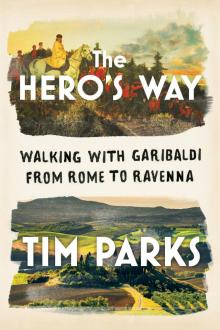 The Hero's Way
The Hero's Way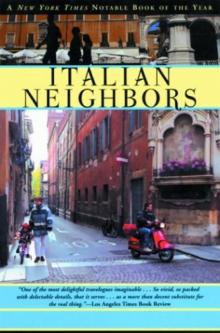 Italian Neighbors
Italian Neighbors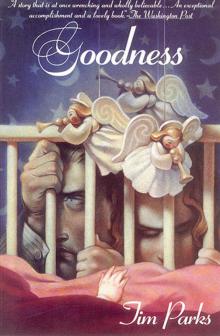 Goodness
Goodness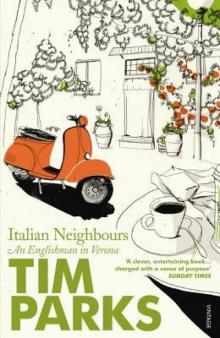 Italian Neighbours_An Englishman in Verona
Italian Neighbours_An Englishman in Verona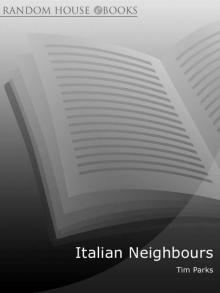 Italian Neighbours
Italian Neighbours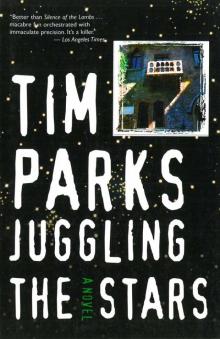 Juggling the Stars
Juggling the Stars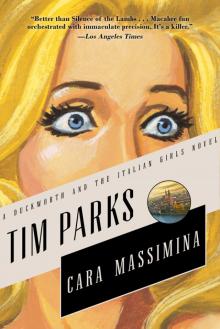 Cara Massimina
Cara Massimina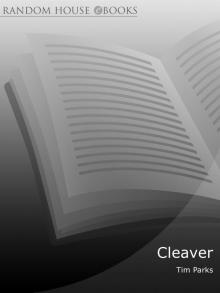 Cleaver
Cleaver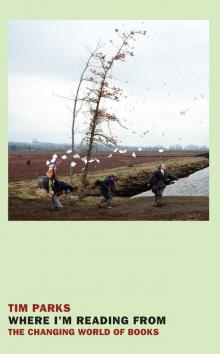 Where I'm Reading From
Where I'm Reading From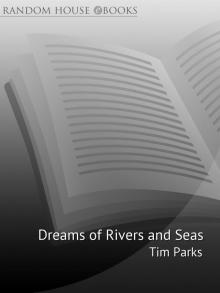 Dreams of Rivers and Seas
Dreams of Rivers and Seas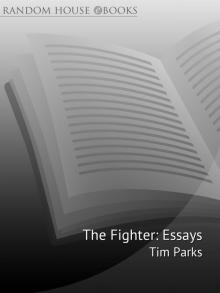 The Fighter
The Fighter In Extremis
In Extremis Painting Death
Painting Death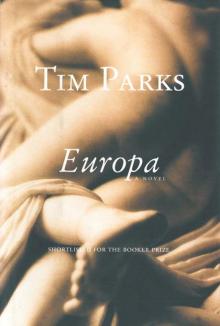 Europa
Europa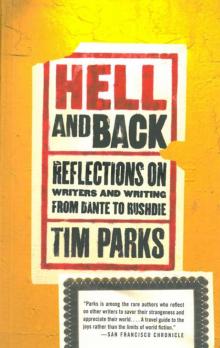 Hell and Back
Hell and Back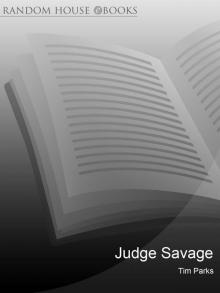 Judge Savage
Judge Savage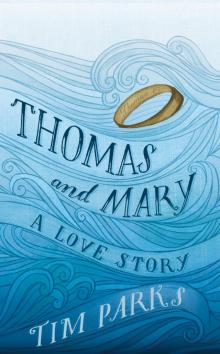 Thomas and Mary
Thomas and Mary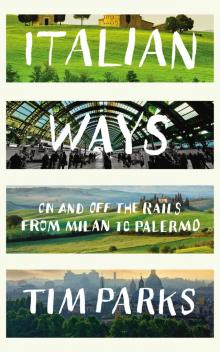 Italian Ways
Italian Ways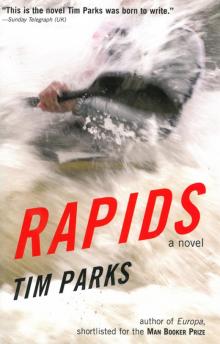 Rapids
Rapids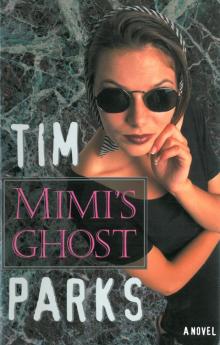 Mimi's Ghost
Mimi's Ghost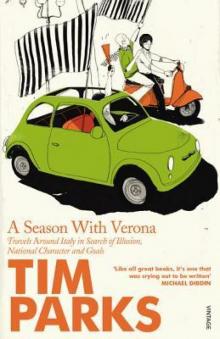 A Season With Verona
A Season With Verona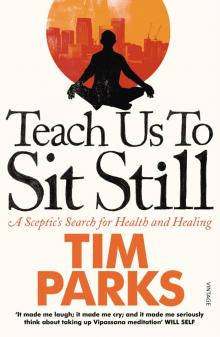 Teach Us to Sit Still
Teach Us to Sit Still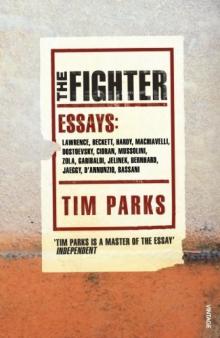 The Fighter_Literary Essays
The Fighter_Literary Essays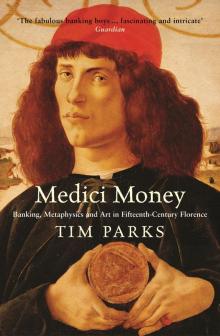 Medici Money
Medici Money